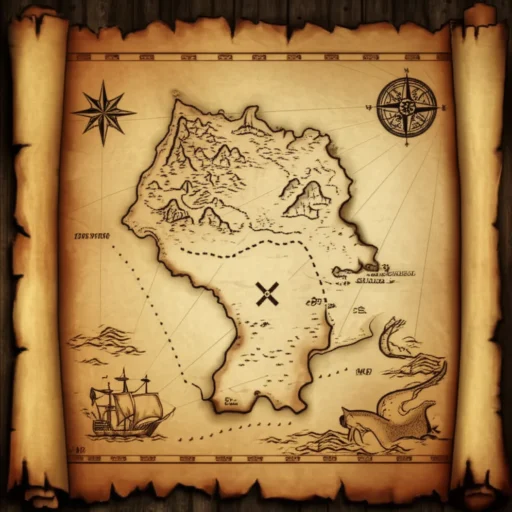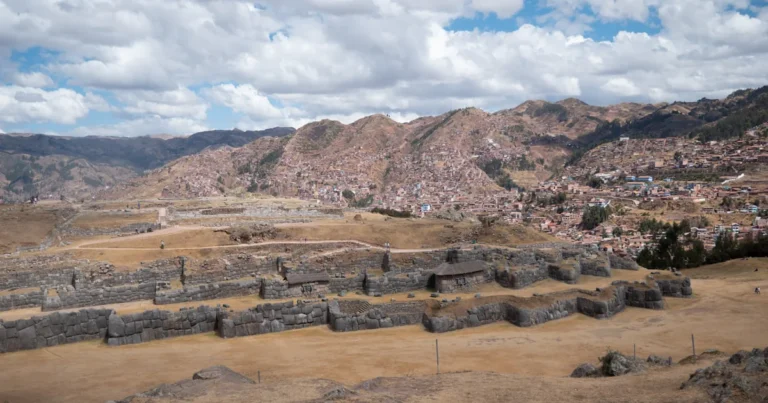Support our educational content for free when you purchase through links on our site. Learn more
The Exodus Route Revealed: 7 Theories That Will Blow Your Mind 🌍 (2025)
Imagine standing at the edge of a vast desert, tracing the footsteps of an ancient people whose journey shaped the course of history. The Exodus route isn’t just a path on a map—it’s a timeless mystery that has puzzled explorers, historians, and theologians for centuries. From the traditional Sinai Peninsula trek to daring claims of a Saudi Arabian Mount Sinai, the quest to uncover the true path of the Israelites’ escape from Egypt is filled with drama, divine interventions, and archaeological enigmas.
In this article, we dive deep into 7 compelling theories about the Exodus route, explore the biblical stations, and unravel the controversies surrounding the Red Sea crossing. Whether you’re a history buff, a spiritual seeker, or a curious traveler, join us as we journey through deserts, ancient cities, and sacred mountains to uncover the secrets behind humanity’s greatest escape story. Ready to follow the trail? Let’s get started!
Key Takeaways
- The Exodus route remains one of history’s most debated mysteries, with multiple competing theories including the traditional Sinai route, northern passages, and Saudi Arabian claims.
- Biblical stations like Marah, Elim, and Kadesh Barnea provide key clues, but their exact locations are still debated among scholars.
- The Red Sea crossing (Yam Suph) is central to the narrative, with proposed sites at the Gulf of Suez, Gulf of Aqaba, and Nuweiba Beach.
- Archaeological evidence is limited but includes intriguing finds like the Merneptah Stele and the Ipuwer Papyrus, which hint at historical realities behind the story.
- Modern explorers and researchers continue to investigate, blending faith, science, and adventure in the quest for answers.
👉 Shop related products and guides:
Table of Contents
- ⚡️ Quick Tips and Facts
- 🗺️ The Exodus Route: Unraveling Humanity’s Greatest Journey
- 📜 The Exodus Narrative: A Divine Escape and a Wilderness Odyssey
- 🤔 Why the Exodus Route Still Captivates Us: More Than Just Ancient History
- 🌍 The Great Debate: Mapping the Exodus – Competing Theories and Controversies
- 1. The Traditional Sinai Peninsula Route: Following Ancient Footsteps
- 2. The Northern Route: A Path Through the Land of Goshen and the Reed Sea
- 3. The Saudi Arabian Route: Unearthing Explosive Claims at Jabal al-Lawz
- 4. Other Less Explored Hypotheses: From Egyptian Military Roads to Speculative Paths
- 🌊 The Red Sea Crossing: Diving Deep into the Miracle at Yam Suph
- 🏜️ The Wilderness Wanderings: Forty Years of Trials, Triumphs, and Divine Provision
- 🔍 Biblical Clues and Archaeological Quests: Hunting for Evidence of the Exodus
- 🌟 The Role of Divine Guidance: Pillar of Cloud, Pillar of Fire, and God’s Unseen Hand
- 📚 Modern Expeditions and Research: Who’s Still Searching for the Truth?
- ⚖️ Navigating the Controversies: Faith, Science, and the Search for the Exodus Route
- ✍️ Our Own Journey: Why We’re Obsessed with the Exodus Mystery
- 🎉 Conclusion: The Enduring Legacy of the Exodus Route
- 🔗 Recommended Links: Dive Deeper into the Mystery
- ❓ FAQ: Your Burning Questions Answered
- 📖 Reference Links: Our Sources and Further Reading
⚡️ Quick Tips and Facts
The Exodus route is one of the most enduring and intriguing mysteries of the ancient world. For those interested in Bible mysteries, you can find more information on our related article at https://www.historyhidden.org/bible-mysteries/. As historians at History Hidden, we’ve compiled some key points to consider when exploring this topic:
- The Exodus is a pivotal event in the Hebrew Bible, marking the Israelites’ journey from slavery in Egypt to freedom in the Promised Land.
- The route taken by the Israelites is not explicitly described in the Bible, leading to numerous theories and debates among scholars and historians.
- Some of the key locations mentioned in the biblical account include Rameses, Succoth, Etham, Pi-HaHiroth, Marah, Elim, and Mount Sinai.
- Archaeological evidence for the Exodus is limited, but some scholars point to discoveries such as the Ipuwer Papyrus and the Merneptah Stele as potential corroborations of the biblical account.
- The search for the Exodus route has captivated explorers, scholars, and the general public for centuries, with many expeditions and research projects underway to uncover the truth.
Key Locations and Their Significance
Understanding the significance of each location is crucial to grasping the narrative of the Exodus. For instance, Rameses is believed to be the starting point of the journey, while Mount Sinai is where the Israelites received the Ten Commandments. The Red Sea crossing is another pivotal event, with various theories about its location and the miracle that occurred there.
🗺️ The Exodus Route: Unraveling Humanity’s Greatest Journey
The Exodus route is a topic of immense interest and debate. With numerous theories and hypotheses, it’s essential to examine the biblical account, archaeological evidence, and historical context to better understand this ancient journey.
The Biblical Account
The Hebrew Bible provides the primary source of information about the Exodus. The book of Exodus, along with parts of Numbers and Deuteronomy, describes the Israelites’ journey from Egypt to the Promised Land. Key events include the Ten Plagues, the Passover, and the Red Sea crossing.
Archaeological Evidence
While archaeological evidence for the Exodus is limited, some discoveries have been interpreted as supporting the biblical account. The Ipuwer Papyrus, for example, describes a period of chaos and upheaval in Egypt, which some scholars believe may be related to the Exodus. The Merneptah Stele, on the other hand, mentions the Israelites as a distinct group in Canaan, providing evidence of their presence in the region.
📜 The Exodus Narrative: A Divine Escape and a Wilderness Odyssey
The Exodus narrative is a complex and multifaceted story that combines elements of history, mythology, and theology. At its core, it’s a story of divine deliverance, where God intervenes on behalf of the Israelites to free them from slavery and guide them to the Promised Land.
The Role of Moses
Moses plays a central role in the Exodus narrative, serving as a leader, mediator, and prophet. His experiences, from his adoption by an Egyptian princess to his encounter with the burning bush, are deeply intertwined with the story of the Exodus.
The Wilderness Journey
The wilderness journey is a critical component of the Exodus narrative, representing a period of transition, testing, and transformation for the Israelites. The wilderness itself is a symbol of chaos and uncertainty, but also of divine provision and guidance.
🤔 Why the Exodus Route Still Captivates Us: More Than Just Ancient History
The Exodus route continues to fascinate people from diverse backgrounds and interests. Several factors contribute to its enduring appeal:
- Historical significance: The Exodus is a pivotal event in human history, shaping the course of Western civilization and influencing art, literature, and culture.
- Spiritual significance: For many, the Exodus represents a powerful story of faith, redemption, and divine intervention, offering insights into the human condition and the nature of God.
- Archaeological mystery: The search for the Exodus route is an ongoing archaeological mystery, with many questions remaining unanswered and numerous theories competing for attention.
🌍 The Great Debate: Mapping the Exodus – Competing Theories and Controversies
The debate over the Exodus route is intense and multifaceted, with various theories and hypotheses vying for acceptance. Some of the most prominent theories include:
1. The Traditional Sinai Peninsula Route: Following Ancient Footsteps
This theory proposes that the Israelites crossed the Red Sea at the Gulf of Suez and then journeyed to Mount Sinai in the southern part of the Sinai Peninsula.
Identifying Mount Sinai: Jebel Musa vs. Other Contenders
One of the key challenges in identifying Mount Sinai is the lack of clear geographical descriptions in the biblical account. Jebel Musa, a mountain in the southern Sinai, is a popular candidate, but other locations, such as Jabal al-Lawz in Saudi Arabia, have also been proposed.
Key Stops on the Traditional Path: Marah, Elim, Rephidim, and Beyond
The traditional route includes several key stops, each with its own significance in the Exodus narrative. Marah, for example, is where the Israelites encountered bitter water, while Elim is notable for its twelve springs and seventy palm trees.
2. The Northern Route: A Path Through the Land of Goshen and the Reed Sea
This theory suggests that the Israelites took a more northerly route, crossing the Red Sea at the Gulf of Aqaba and then journeying through the Land of Goshen.
The “Yam Suph” Conundrum: Red Sea or Reed Sea?
The biblical term “Yam Suph” is often translated as “Red Sea,” but some scholars argue that it refers to a reed sea or a body of water with reeds, rather than the modern Red Sea.
Arguments for a Northern Passage: Avoiding Pharaoh’s Strongholds
Proponents of the northern route argue that it would have allowed the Israelites to avoid Pharaoh’s strongholds and military outposts, increasing their chances of a successful escape.
3. The Saudi Arabian Route: Unearthing Explosive Claims at Jabal al-Lawz
This theory proposes that the Israelites crossed the Red Sea at Nuweiba Beach and then journeyed to Mount Sinai in Saudi Arabia, specifically to Jabal al-Lawz.
Ron Wyatt, Bob Cornuke, and the Quest for the “Real” Mount Sinai
Ron Wyatt and Bob Cornuke are two explorers who have made significant claims about the location of Mount Sinai, including the discovery of a possible altar and chariot wheels at Jabal al-Lawz.
Compelling “Evidence”: Split Rocks, Burnt Peaks, and Golden Calf Altars
Proponents of the Saudi Arabian route point to various features at Jabal al-Lawz, such as a split rock and a burnt peak, as evidence of the biblical account.
Navigating the Skepticism: Critiques and Counter-Arguments
While some scholars find the evidence compelling, others are more skeptical, arguing that the claims are exaggerated or misinterpreted.
4. Other Less Explored Hypotheses: From Egyptian Military Roads to Speculative Paths
Other theories, such as the use of Egyptian military roads or speculative paths through the wilderness, have also been proposed, although they are less well-known and often more speculative.
🌊 The Red Sea Crossing: Diving Deep into the Miracle at Yam Suph
The Red Sea crossing is one of the most dramatic and miraculous events in the Exodus narrative. Several theories attempt to explain the nature of this miracle:
Geographical Possibilities: Gulf of Aqaba vs. Gulf of Suez
The location of the Red Sea crossing is a topic of debate, with some scholars arguing for the Gulf of Aqaba and others for the Gulf of Suez.
The Nuweiba Beach Phenomenon: A Controversial Crossing Point?
Nuweiba Beach, located on the Gulf of Aqaba, has been proposed as a possible crossing point, with some claiming that it matches the biblical description of the Red Sea.
Solomon’s Pillars: Markers of a Divine Intervention?
Solomon’s Pillars, two stone pillars located on either side of the Gulf of Aqaba, have been interpreted by some as markers of the Red Sea crossing, potentially indicating a divine intervention.
🏜️ The Wilderness Wanderings: Forty Years of Trials, Triumphs, and Divine Provision
The wilderness wanderings are a critical component of the Exodus narrative, representing a period of testing, growth, and transformation for the Israelites.
Manna from Heaven and Water from the Rock: Sustenance in the Desert
The Israelites received manna from heaven and water from the rock, demonstrating God’s provision and care for them in the wilderness.
The Significance of Kadesh Barnea: A Pivotal Point in the Journey
Kadesh Barnea is a pivotal location in the wilderness journey, marking a turning point in the Israelites’ relationship with God and their eventual entry into the Promised Land.
🔍 Biblical Clues and Archaeological Quests: Hunting for Evidence of the Exodus
The search for evidence of the Exodus is an ongoing quest, with scholars and archaeologists using a combination of biblical clues and archaeological discoveries to uncover the truth.
Pithom, Raamses, and the Cities of Bondage: Where Did It All Begin?
The biblical account mentions Pithom and Raamses as cities where the Israelites were enslaved, but the exact locations of these cities remain a topic of debate.
The Elusive Nature of Archaeological Proof: Why It’s So Hard to Find
Archaeological proof of the Exodus is elusive, with many scholars arguing that the lack of evidence does not necessarily disprove the biblical account.
Interpreting the Biblical Stations: From Succoth to the Plains of Moab
The biblical account provides a list of stations or stopping points on the Israelites’ journey, but interpreting these stations and identifying their locations is a complex task.
🌟 The Role of Divine Guidance: Pillar of Cloud, Pillar of Fire, and God’s Unseen Hand
The Exodus narrative is characterized by a strong sense of divine guidance, with God leading the Israelites through the wilderness using a pillar of cloud and a pillar of fire.
📚 Modern Expeditions and Research: Who’s Still Searching for the Truth
The search for the Exodus route and the truth about the biblical account continues, with many modern expeditions and research projects underway.
⚖️ Navigating the Controversies: Faith, Science, and the Search for the Exodus Route
The search for the Exodus route is often marked by controversy, with debates between faith and science, and different interpretations of the biblical account.
✍️ Our Own Journey: Why We’re Obsessed with the Exodus Mystery
As historians at History Hidden, we’re fascinated by the Exodus mystery and its enduring impact on human history and culture. Our journey to uncover the truth about the Exodus route has taken us to the depths of biblical scholarship, archaeological research, and historical analysis.
🎉 Conclusion: The Enduring Legacy of the Exodus Route
Wow, what a journey we’ve been on! From the dusty plains of ancient Egypt to the mysterious peaks of Mount Sinai, the Exodus route remains one of history’s most captivating puzzles. Our exploration uncovered multiple competing theories—from the traditional Sinai Peninsula trek to the bold Saudi Arabian claims at Jabal al-Lawz, and the intriguing northern routes through the Land of Goshen. Each theory brings its own compelling evidence and challenges, reminding us that history is often a tapestry woven from faith, archaeology, and interpretation.
What’s clear? The Exodus story is more than just a route on a map; it’s a powerful narrative of liberation, divine guidance, and transformation that has shaped civilizations and faith traditions for millennia. While archaeological proof remains elusive, the biblical stations, ancient texts, and modern research keep the mystery alive and fuel our collective curiosity.
For those of us at History Hidden™, the quest to understand the Exodus route is a thrilling blend of detective work and storytelling. Whether you lean toward faith-based interpretations or scientific skepticism, the journey itself enriches our appreciation of history’s depth and complexity.
So, if you’re itching to dive deeper, explore the recommended resources below, and maybe even plan your own pilgrimage to some of these ancient sites. The Exodus route isn’t just a story of the past—it’s a living adventure waiting for you to uncover.
🔗 Recommended Links: Dive Deeper into the Mystery
Ready to dig deeper into the Exodus and its route? Here are some top-notch books and resources that combine scholarly insight with engaging storytelling:
-
The Exodus: How It Happened and Why It Matters by Richard Elliott Friedman
Amazon -
The Bible Unearthed: Archaeology’s New Vision of Ancient Israel and the Origin of Its Sacred Texts by Israel Finkelstein & Neil Asher Silberman
Amazon -
Searching for the Exodus Route: A Historical and Archaeological Journey by Bob Cornuke
Amazon -
Exodus: The Egyptian Evidence by Donald B. Redford
Amazon -
Mount Sinai in Arabia: The Evidence by James K. Hoffmeier
Amazon
👉 Shop related products and guides:
❓ FAQ: Your Burning Questions Answered
What is the most widely accepted route of the Exodus from Egypt to Canaan?
The traditional Sinai Peninsula route is the most widely accepted among scholars and religious traditions. It proposes that the Israelites crossed the Red Sea near the Gulf of Suez, journeyed through the Sinai wilderness, and reached Mount Sinai (often identified as Jebel Musa). This route aligns with many biblical references and has been the focus of numerous archaeological and historical studies. However, alternative theories exist, reflecting the complexity of the evidence.
Where did the Israelites cross the Red Sea during the Exodus, according to the Bible?
The Bible refers to the crossing location as Yam Suph, traditionally translated as the “Red Sea.” However, scholars debate whether this term means the Red Sea proper or a “Sea of Reeds”—a marshy area with reeds. Two main proposed crossing points are:
- The Gulf of Suez (traditional view)
- The Gulf of Aqaba, particularly near Nuweiba Beach, supported by some archaeological finds like coral-encrusted chariot wheels.
The exact location remains uncertain, but the crossing is central to the Exodus narrative.
Read more about “Unlocking the Ark of the Covenant: 9 Mysteries & Legends Revealed 🔍 (2025)”
What archaeological evidence supports the traditional route of the Exodus?
Archaeological evidence directly supporting the Exodus is scarce and debated. Some indirect evidence includes:
- The Merneptah Stele (circa 1208 BCE), which mentions Israel as a people in Canaan.
- The Ipuwer Papyrus, describing chaos in Egypt, which some link to the plagues.
- Remains of ancient settlements like Pi-Ramesses (Rameses) and Pithom, cities mentioned in the Bible.
- Natural features matching biblical descriptions, such as springs at Elim and bitter waters at Marah.
However, no definitive archaeological proof of a mass Exodus has been found, leading many scholars to view the event as a blend of history and theology.
How long did the Exodus journey take, and what were some of the key stopping points?
Biblical texts suggest the journey from Egypt to Mount Sinai took about three months, followed by 40 years of wilderness wandering before entering Canaan. Key stopping points listed in Numbers 33 include:
- Succoth
- Etham
- Pi-HaHiroth
- Marah
- Elim
- Rephidim
- Kadesh Barnea
- Mount Sinai
These stations mark significant events like water shortages, divine provision, and battles.
Which mountains are believed to be the location of Mount Sinai, where Moses received the Ten Commandments?
Several mountains are proposed as Mount Sinai:
- Jebel Musa in the Sinai Peninsula (traditional and most widely accepted)
- Jabal al-Lawz in northwestern Saudi Arabia (supported by some explorers and researchers)
- Other less-known candidates include Gebel Khashm et-Tarif near Midian.
Each site has archaeological and geographical features claimed to match biblical descriptions, but consensus remains elusive.
What role did the Desert of Zin play in the Israelites’ journey during the Exodus?
The Desert of Zin is mentioned in Numbers as part of the Israelites’ wandering route, particularly near Kadesh Barnea, a significant encampment and staging area before entering Canaan. It was a harsh wilderness region symbolizing testing and transition. The desert also features in the story of Moses striking the rock to bring forth water.
Are there any alternative theories about the Exodus route that contradict the traditional biblical account?
Yes! Alternative theories challenge the traditional route and include:
- The Northern Route, suggesting a crossing near the Nile Delta and a path through the Land of Goshen.
- The Saudi Arabian Route, placing Mount Sinai and the crossing in Midian (modern-day Saudi Arabia).
- The idea that the “Red Sea” was a series of lakes and marshes rather than the open sea.
- Some scholars propose the Exodus was a smaller-scale event or symbolic narrative rather than a literal mass migration.
These theories often rely on reinterpreting biblical texts, archaeological findings, and geographical clues.
📖 Reference Links: Our Sources and Further Reading
- Stations of the Exodus – Wikipedia — Comprehensive list and scholarly discussion of the biblical stations.
- Bible Mapper Blog: The Route of the Exodus — Detailed analysis of distances and route proposals.
- Holy Land Site: Exodus Route and Red Sea Crossing — Archaeological and geographical insights.
- Israel Finkelstein and Neil Silberman, The Bible Unearthed — Groundbreaking archaeological perspectives.
- Merneptah Stele Translation and Analysis — Evidence of Israel in ancient Canaan.
- Ipuwer Papyrus Translation — Ancient Egyptian document describing chaos.
- Ron Wyatt’s Research on Jabal al-Lawz — Controversial claims about Mount Sinai.
- History Hidden™ Folklore and Legends — Explore more myths and historical mysteries.
- History Hidden™ Mythology Stories — Dive into ancient tales and legends.
We hope this deep dive into the Exodus route has sparked your curiosity and enriched your understanding of one of history’s most fascinating journeys. Keep exploring, questioning, and uncovering the hidden stories that shape our world!





